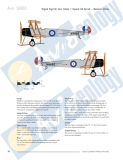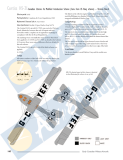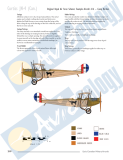- Aviaeology Shop
- >
- Publications
- >
- Print Publications
- >
- Early Canadian Military Aircraft Volume 1
Early Canadian Military Aircraft Volume 1
SKU:
AOB010
CA$59.00
CA$49.00
CA$49.00
On Sale
Unavailable
per item
ISBN-13: 9780978069667
by John Griffin and Anthony Stachiw (illustrations by Andrew Tattersall and Terry Higgins)
Hardcover, profusely illustrated with photographs, multi-view colour scheme art, line art, and severalmaps
Synopsis
Why this particular topic? Why the incredible detail, the result of such painstaking research? Because, I am convinced, that the subject is a part of the central core of Canadian history. In the two decades between the World Wars, Canada developed greatly, building upon the sense of solidarity gained in the first of these conflicts. Much of this was facilitated by the development of technology, of which aviation was a major part. Oddly enough, for such a laisser faire society it was the Canadian government that played a leading role in this, and the RCAF and its predecessors was its instrument. Not only did the bush pilots in uniform pioneer myriad aspects of aviation in all parts of Canada, but despite a miniscule budget and a suspicious parliament and populace they maintained the nucleus of a military air arm which slowly developed into the framework of the wartime RCAF. But, whatever honor is due to the men (and it is great), it is the aircraft that provide the visual impact and the structure of the narrative.An incredible number of types, suitable and unsuitable, were flown and maintained under all manner of conditions and a knowledge of them is essential for the appreciation of both the impact and the substance of the subject. When this knowledge is presented in such a totality of detail and sequentiality as here, no more is required.The same can be said for the massive coverage of paint schemes and markings. This merits more than the usual patronizing reference to its value for the modeling fraternity as well as to artists and illustrators. Its development and evolution is part and parcel of the story a visual description of the conflicting forces of official standards and small groups of men and machines in which the former must interpret those standards as best they might. From the Foreword by writer, historian, author Carl VincentVoted Book of the Month when reviewed in Aeroplane Monthly (August 2011).Numerous useful appendices.Fully indexed.REVIEWS The aircraft chapters are profusely illustrated with an aggregate of 122 pages of color scheme information and profiles, 125 mostly rare photographs, and detailed technical and serial tables. Everything is well laid out such that you aren't dozing through a half-dozen pages of text nor is the text interrupted by seemingly random placement of photos and captions or excessive white-space. After the aircraft chapters come several appendices which cover general information on finishing materials, colors and markings, including reproductions from original documentation, 15 pages of scale drawings (with fuselage cross-sections if you still build your own), maps of bases and of the 1920 Trans-Canada Flight, references, and full indexes. John Ratzenberger, IPMS USA""
Why this particular topic? Why the incredible detail, the result of such painstaking research? Because, I am convinced, that the subject is a part of the central core of Canadian history. In the two decades between the World Wars, Canada developed greatly, building upon the sense of solidarity gained in the first of these conflicts. Much of this was facilitated by the development of technology, of which aviation was a major part. Oddly enough, for such a laisser faire society it was the Canadian government that played a leading role in this, and the RCAF and its predecessors was its instrument. Not only did the bush pilots in uniform pioneer myriad aspects of aviation in all parts of Canada, but despite a miniscule budget and a suspicious parliament and populace they maintained the nucleus of a military air arm which slowly developed into the framework of the wartime RCAF. But, whatever honor is due to the men (and it is great), it is the aircraft that provide the visual impact and the structure of the narrative.An incredible number of types, suitable and unsuitable, were flown and maintained under all manner of conditions and a knowledge of them is essential for the appreciation of both the impact and the substance of the subject. When this knowledge is presented in such a totality of detail and sequentiality as here, no more is required.The same can be said for the massive coverage of paint schemes and markings. This merits more than the usual patronizing reference to its value for the modeling fraternity as well as to artists and illustrators. Its development and evolution is part and parcel of the story a visual description of the conflicting forces of official standards and small groups of men and machines in which the former must interpret those standards as best they might. From the Foreword by writer, historian, author Carl VincentVoted Book of the Month when reviewed in Aeroplane Monthly (August 2011).Numerous useful appendices.Fully indexed.REVIEWS The aircraft chapters are profusely illustrated with an aggregate of 122 pages of color scheme information and profiles, 125 mostly rare photographs, and detailed technical and serial tables. Everything is well laid out such that you aren't dozing through a half-dozen pages of text nor is the text interrupted by seemingly random placement of photos and captions or excessive white-space. After the aircraft chapters come several appendices which cover general information on finishing materials, colors and markings, including reproductions from original documentation, 15 pages of scale drawings (with fuselage cross-sections if you still build your own), maps of bases and of the 1920 Trans-Canada Flight, references, and full indexes. John Ratzenberger, IPMS USA""






































